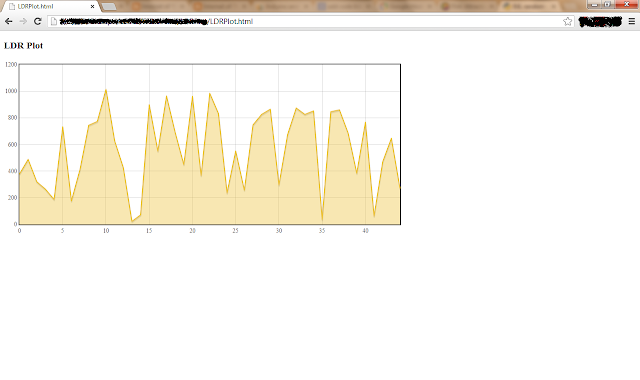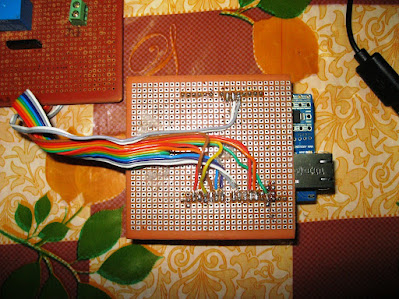//for use with IDE 1.0
//open serial monitor to see what the arduino receives
//use the \ slash to escape the " in the html
//for use with W5100 based ethernet shields
// this project is hosted at
// http://code.google.com/p/arduino-autohome/
#include <SPI.h>
#include <Ethernet.h>
byte mac[] = { 0x90, 0xA2, 0xDA, 0x0D, 0x78, 0xE0 }; // <------- PUT YOUR MAC Address Here
byte ip[] = { 192, 168, 1, 102 }; // <------- PUT YOUR IP Address Here
byte gateway[] = { 192, 168, 1, 254 }; // <------- PUT YOUR ROUTERS IP Address to which your shield is connected Here
byte subnet[] = { 255, 255, 255, 0 }; // <------- It will be as it is in most of the cases
EthernetServer server(80); // <------- It's Defaulf Server Port for Ethernet Shield
String readString;
//////////////////////
void setup()
{
pinMode(6, OUTPUT); // Pin Assignment through which relay will be controlled
pinMode(7, OUTPUT);
pinMode(8, OUTPUT);
pinMode(9, OUTPUT);
//start Ethernet
Ethernet.begin(mac, ip, gateway, subnet);
server.begin();
//enable serial data print
Serial.begin(9600);
Serial.println("server LED test 1.0"); // so that we can know what is getting loaded
}
void loop()
{
// Create a client connection
EthernetClient client = server.available();
if (client) {
while (client.connected()) {
if (client.available()) {
char c = client.read();
//read char by char HTTP request
if (readString.length() < 100) {
//store characters to string
readString += c;
//Serial.print(c);
}
//if HTTP request has ended
if (c == '\n') {
///////////////
Serial.println(readString); //print to serial monitor for debuging
/* Start OF HTML Section. Here Keep everything as it is unless you understands its working */
client.println("HTTP/1.1 200 OK"); //send new page
client.println("Content-Type: text/html");
client.println();
//client.println("<meta http-equiv=\"refresh\" content=\"5\">");
client.println("<HTML>");
client.println("<HEAD>");
client.println("<meta name='apple-mobile-web-app-capable' content='yes' />");
client.println("<meta name='apple-mobile-web-app-status-bar-style' content='black-translucent' />");
client.println("<link rel=\"stylesheet\" type=\"text/css\" href=\"http://arduino-autohome.googlecode.com/svn/trunk/autohome.css\" />");
client.println("</HEAD>");
client.println("<body bgcolor=\"#D0D0D0\">");
client.println("<hr/>");
client.println("<hr/>");
client.println("<h4><center><img border=\"2\" src=\"https://blogger.googleusercontent.com/img/b/R29vZ2xl/AVvXsEh7D936U9HueV3OmYSI_yfSMGiFYI9L5gDeW2ydPt9eTugpNaUxyr_ABI4QjhPSRt3bhA4v_eLg3GYq133qd9QDqu5v7x9OwdsDSfQZyy2fc9bWrEneR1WpAN7LWgdTfMOpehMpzShvW7U/s960/Logo.jpg\" /></center></h4>");
client.println("<hr/>");
client.println("<hr/>");
client.println("<br />");
client.println("<br />");
client.println("<br />");
client.println("<br />");
client.println("<br />");
// Relay Control Code
client.println("<a href=\"/?relay1on\"\">Turn On Light 1</a>");
client.println("<a href=\"/?relay1off\"\">Turn Off Light 1</a><br />");
client.println("<br />");
client.println("<br />");
client.println("<br />");
client.println("<br />");
client.println("<a href=\"/?relay2on\"\">Turn On Light 2</a>");
client.println("<a href=\"/?relay2off\"\">Turn Off Light 2</a><br />");
client.println("<br />");
client.println("<br />");
client.println("<br />");
client.println("<br />");
client.println("<a href=\"/?relay3on\"\">Turn On Light 3</a>");
client.println("<a href=\"/?relay3off\"\">Turn Off Light 3</a><br />");
client.println("<br />");
client.println("<br />");
client.println("<br />");
client.println("<br />");
client.println("<a href=\"/?relay4on\"\">Turn On Light 4</a>");
client.println("<a href=\"/?relay4off\"\">Turn Off Light 4</a><br />");
client.println("<br />");
client.println("<br />");
// control arduino pin via ethernet Start //
if(readString.indexOf("?relay1on") >0)//checks for on
{
digitalWrite(6, HIGH); // set pin 4 high
Serial.println("Led On");
client.println("<link rel='apple-touch-icon' href='http://chriscosma.co.cc/on.png' />");
//client.println("Light 1 Is On");
client.println("<br />");
}
else{
if(readString.indexOf("?relay1off") >0)//checks for off
{
digitalWrite(6, LOW); // set pin 4 low
Serial.println("Led Off");
client.println("<link rel='apple-touch-icon' href='http://chriscosma.co.cc/off.png' />");
//client.println("Light 1 Is Off");
client.println("<br />");
}
}
if(readString.indexOf("?relay2on") >0)//checks for on
{
digitalWrite(7, HIGH); // set pin 4 high
Serial.println("Led On");
client.println("<link rel='apple-touch-icon' href='http://chriscosma.co.cc/on.png' />");
//client.println("Light 2 Is On");
client.println("<br />");
}
else{
if(readString.indexOf("?relay2off") >0)//checks for off
{
digitalWrite(7, LOW); // set pin 4 low
Serial.println("Led Off");
client.println("<link rel='apple-touch-icon' href='http://chriscosma.co.cc/off.png' />");
//client.println("Light 2 Is Off");
client.println("<br />");
}
}
if(readString.indexOf("?relay3on") >0)//checks for on
{
digitalWrite(8, HIGH); // set pin 4 high
Serial.println("Led On");
client.println("<link rel='apple-touch-icon' href='http://chriscosma.co.cc/on.png' />");
// client.println("Light 3 Is On");
client.println("<br />");
}
else{
if(readString.indexOf("?relay3off") >0)//checks for off
{
digitalWrite(8, LOW); // set pin 4 low
Serial.println("Led Off");
client.println("<link rel='apple-touch-icon' href='http://chriscosma.co.cc/off.png' />");
//client.println("Light 3 Is Off");
client.println("<br />");
}
}
if(readString.indexOf("?relay4on") >0)//checks for on
{
digitalWrite(9, HIGH); // set pin 4 high
Serial.println("Led On");
client.println("<link rel='apple-touch-icon' href='http://chriscosma.co.cc/on.png' />");
//client.println("Light 4 Is On");
client.println("<br />");
}
else{
if(readString.indexOf("?relay4off") >0)//checks for off
{
digitalWrite(9, LOW); // set pin 4 low
Serial.println("Led Off");
client.println("<link rel='apple-touch-icon' href='http://chriscosma.co.cc/off.png' />");
//client.println("Light 4 Is Off");
client.println("<br />");
}
}
// control arduino pin via ethernet End //
// Relay Status Display
client.println("<center>");
client.println("<table border=\"5\">");
client.println("<tr>");
if (digitalRead(6))
{
client.print("<td>Light 1 is ON</td>");
}
else
{
client.print("<td>Light 1 is OFF</td>");
}
client.println("<br />");
if (digitalRead(7))
{
client.print("<td>Light 2 is ON</td>");
}
else
{
client.print("<td>Light 2 is OFF</td>");
}
client.println("</tr>");
client.println("<tr>");
if (digitalRead(8))
{
client.print("<td>Light 3 is ON</td>");
}
else
{
client.print("<td>Light 3 is OFF</td>");
}
if (digitalRead(9))
{
client.print("<td>Light 4 is ON</td>");
}
else
{
client.print("<td>Light 4 is OFF</td>");
}
client.println("</tr>");
client.println("</table>");
client.println("</center>");
//clearing string for next read
readString="";
client.println("</body>");
client.println("</HTML>");
delay(1);
//stopping client
client.stop();
}
}
}
}
}


















